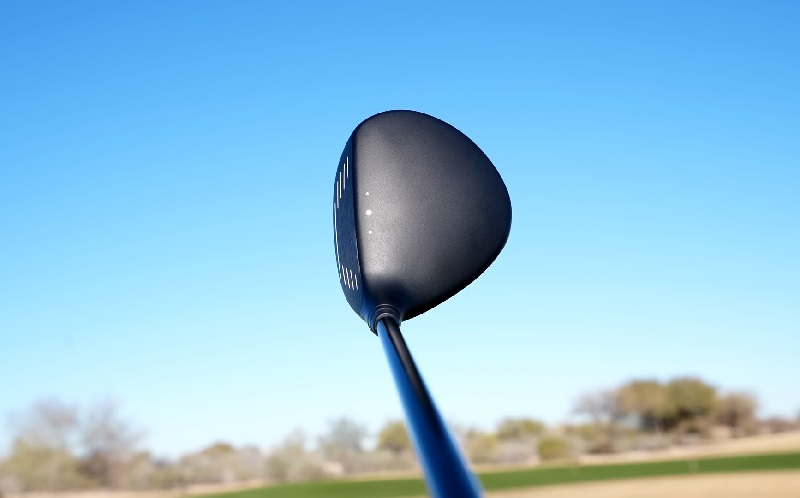Golfers of all levels are always looking for ways to improve their game, and one tool that can help is a rescue club.
Rescue golf clubs are designed to be used when you need extra distance and accuracy from difficult lies – like when you’re stuck in the rough or sand traps. They have become increasingly popular as golfers realize what an advantage they can give them on the course.
So what exactly is a rescue club and what benefits does it offer? Let’s take a closer look at what these clubs can do for your game!
What Is A Rescue Club In Golf?

A rescue club, also known as a hybrid club, is a type of golf club that combines the features of both irons and woods. It was first introduced in the late 1990s as a solution to the difficulty many golfers had in hitting long iron shots. The rescue club has since become a popular option for golfers of all skill levels.
The rescue club is designed to provide the accuracy and control of an iron with the distance and forgiveness of a wood. It typically has a smaller head than a wood but larger than an iron, with a low center of gravity and a wide sole. The clubface is also more shallow than wood, making it easier to hit from various lies, including thick rough and fairway bunkers.
The rescue club is typically numbered to correspond with the iron it replaces. For example, a 3-hybrid is designed to replace a 3-iron, and a 4-hybrid is designed to replace a 4-iron. However, because of the design of the rescue club, many golfers find that they can hit it farther and with more accuracy than the iron it replaces.
One of the benefits of using a rescue club is its versatility. It can be used for various shots, including tee shots, fairway shots, and shots from the rough. Additionally, it can be used for both long and short approach shots, as well as chipping and pitching around the green.
The rescue club has become a popular option for golfers looking for a club that provides the distance and forgiveness of wood with the accuracy and control of an iron. It has also helped many golfers improve their game by making long shots easier and more consistent.
Why Is It Called A Rescue Club?
Rescue clubs are an essential piece of golfing equipment, and their name rightly reflects their function. Golfers use them to rescue themselves from challenging shots, whether out of the woods, deep rough, or sand trap.
This club is designed to help golfers get back onto the fairway easily, giving even the curious beginner a chance to hit those seemingly impossible shots confidently.
For such an effective piece of gear, it’s only fitting that it is called what it does – a rescue club.
Who Manufactures Rescue Clubs?

Rescue clubs are made by many of the big golf clubs manufacturers, such as Callaway, TaylorMade and Titleist. They come in various lofts and lie angles to suit different player profiles.
For example, players with an upright swing will benefit from a more upright lie angle, while players with a more flat swing will benefit from a flatter lie angle. The lofts range from 17 to 25 degrees and the lies range from 58 to 64 degrees, depending on the manufacturer.
What Makes Rescue Clubs Different From Irons?
As I mentioned above, rescue clubs are designed to combine the features of irons and woods, providing golfers with a more versatile and forgiving club. Here are the key differences between rescue clubs and irons:
- Club head shape: Rescue clubs have larger and rounder club heads compared to irons. This larger club head provides a larger sweet spot and a higher moment of inertia (MOI), which makes it easier to hit the ball straight and far.
- Clubface: Rescue clubs have a slightly angled club face, which helps to launch the ball higher into the air. This is particularly useful when trying to hit the ball out of rough or sand traps.
- Shaft length: The shaft of a rescue club is shorter than that of a wood but longer than that of an iron. This provides the golfer with more control over their swing while still providing distance.
- Loft: Rescue clubs have a higher loft than irons, which helps to get the ball into the air quickly and easily. This is particularly useful when hitting shots from the rough or out of bunkers.
- Forgiveness: A rescue club’s larger sweet spot and higher MOI make it more forgiving than an iron. This means that even off-center hits will still result in a decent shot.
Rescue clubs are designed to be more forgiving and versatile than irons. They are particularly useful for golfers who struggle with hitting long irons and for shots where precision is not as important as distance and consistency.
Learn from a master of the game: Discover the Golf Clubs That Drive Tiger Woods‘ Record-Breaking Performances
What Are The Benefits Of Using A Rescue Club?
Unlike other clubs, the rescue golf club has a low center of gravity, which helps to launch the ball higher into the air so it will have more distance. Additionally, the club’s large sole helps reduce turf contact and create a more solid strike.
The key benefit of using a rescue golf club is that it can help you hit longer, higher shots out of trouble. This means you can easily reach those greens which you would previously not have been able to get close enough for an approach shot.
Furthermore, if you are in a tight spot and need to carry an obstacle or hit a specific yardage, the rescue club can help you do that.
The other key benefit of using a rescue club is that it will reduce your chance of mis-hitting shots. This is because the low center of gravity helps to minimize mis-hits and the large sole helps to reduce turf contact. Moreover, it is easy to set up and swing, making it easy for any player to use.
When To Use A Rescue Golf Club?

Did you know that there are situations where a standard iron or wood just won’t cut it? That’s where rescue clubs come in – they offer a more versatile and forgiving option than traditional long irons. So, when should you consider using a rescue club?
Long Approach Shots
When you need to hit a long approach shot to the green, a rescue club can help you get the ball up in the air and land it softly on the green. This is particularly useful when there are hazards or roughs that you need to clear.
Tee Shots
If you struggle with hitting your driver consistently, using a rescue club off the tee can be a game changer. While you may sacrifice a little bit of distance, you’ll gain accuracy and consistency, which is crucial for keeping your score low.
Shots From The Rough
Rescue clubs are designed to be more forgiving than long irons, which makes them a great option when hitting shots from the rough. The larger sweet spot and higher moment of inertia (MOI) can help you get the ball out of the rough and back into play.
Shots From Fairway Bunkers
If you find yourself in a fairway bunker, using a rescue club can help you get the ball out and back into play. The angled club face can help you get the ball up quickly and over the lip of the bunker.
Chipping and Pitching
Rescue clubs can be a great option for chipping and pitching around the green. The shorter shaft length and higher loft can help you control your shots and get the ball closer to the hole, ultimately helping you save strokes.
So, don’t underestimate the power of a good rescue club – it could be just the tool you need to improve your game and lower your score!
How To Hit A Rescue Golf Club?
Hitting a rescue club can be intimidating for many golfers, especially if you’re used to hitting traditional irons or woods. But with the right technique, you can make the most out of this versatile club. Here are some simple tips to help you hit a rescue club with confidence:
Set up correctly: Start by positioning the ball in the middle of your stance, with your weight evenly distributed between your feet. Make sure the clubface is pointing straight at your target.
Take a smooth swing: Unlike with a driver or fairway wood, you don’t need to swing as hard to hit the ball far with a rescue club. Focus on making a smooth, controlled swing and hitting the ball solidly.
Sweep the ball: With a rescue club, you want to sweep the ball off the turf rather than take a divot like you would with an iron. This means hitting the ball just above the ground and contacting the center or slightly toward the bottom of the clubface.
Create a descending blow: While you don’t want to hit the ball too high in the air, you also don’t want it to roll too much on the ground. To achieve the right trajectory, use a descending blow to make the ball fly high but land softly.
Practice different shots: Rescue clubs are versatile and can be used for various shots. Practice hitting the club from different lies, such as the fairway, rough, and sand traps, to get comfortable with its capabilities.
By following these tips and practicing regularly, you’ll soon master hitting a rescue club and be able to use it to your advantage on the golf course.
Ball Flight Expectations With A Rescue Golf Club
Rescue clubs tend to produce a higher ball flight than long irons but a lower ball flight than fairway woods. This can make them a good option for golfers who struggle with getting their long irons in the air but find fairway woods to be too difficult to control.
When hitting a rescue club, the ball flight can be influenced by a number of factors, including the loft of the club, the angle of attack, the swing speed, and the position of the ball in the stance. Here are some general guidelines for ball flight expectations with a rescue club:
- Higher ball flight: If you want to hit the ball higher with a rescue club, you can try positioning the ball slightly forward in your stance or using a club with more loft. A higher ball flight can be useful for carrying the ball over obstacles or landing it softly on the green.
- Lower ball flight: If you want to hit the ball lower with a rescue club, you can try positioning the ball slightly back in your stance or using a club with less loft. A lower ball flight can be useful for getting more distance and penetrating winds.
- Straight ball flight: Rescue clubs are generally designed to be more forgiving than long irons, which means they can help reduce the effects of a slice or hook. However, it’s still important to focus on making a square, controlled swing to produce a straight ball flight.
The ball flight expectations with a rescue club will depend on your individual swing and the specific club you’re using.
What Is The Distance Of The Rescue Golf Club?

The distance of a rescue golf club can vary depending on several factors, including the club’s loft, shaft length, and the golfer’s swing speed and technique. Generally, a rescue club’s distance falls between a long iron and a fairway wood.
A typical rescue club can range in the loft from 16-27 degrees, with higher lofts providing more loft and shorter distances. A 16-degree rescue club, for example, can hit a distance of around 200-220 yards, while a 27-degree rescue club can hit a distance of around 150-170 yards.
Additionally, the distance a Rescue golf club can provide will depend on the swing speed and form of the golfer. Therefore, your results may vary.
If you need more help finding the right Rescue golf club for you and your specific game, contact a knowledgeable PGA professional at your local golf club. They can provide the best advice and ensure that your clubs are fitted to your game for maximum performance.
Why Should You Have The Rescue Golf Club In Your Golf Clubs Set?
Having a rescue golf club in your set of clubs can provide many advantages for any golfer. A rescue golf club is designed to give you more control off the tee and from the fairway, which makes it perfect for tricky shots that require you to hit over obstacles or water hazards. It’s also helpful when hitting out of deep rough, bunkers, or other hard-to-reach areas.
The rescue club is typically a hybrid, meaning it combines the longer shaft of an iron with the loft and larger head of wood, so it can be used to hit shots from anywhere on the course. Additionally, many golfers find that they get more consistent results when using a rescue club, so it might be worth considering if you’re looking to improve your game.
Having a rescue club in your bag can also come in handy when seeking out a new club to replace an old one — you’ll have the option of using the hybrid and not having to switch out different clubs for various shots.
Tips From Professional Players On Using The Rescue Club Effectively
Professional players have found the rescue club to be an invaluable part of their bag because it provides them with a greater range of shots when trying to get out of tough situations.
One tip from professional players on using the rescue golf club effectively is to play the shot as if it were wood. This means keeping your stance slightly open and taking an aggressive swing with plenty of follow-throughs. The ball should be hit higher than you would with an iron but less high than wood. The ball should fly with maximum carry and land softly on the green.
Another tip is to keep your hands ahead of the clubhead at impact, which will help ensure that you don’t hit it fat or thin. When using a rescue club, creating a descending blow onto the ball is important for maximum carry. This means you should swing down and slightly across the flight line.
Finally, when playing a shot with your rescue golf club, always consider what kind of lie you are dealing with. If the ball is sitting on a hardpan or deep rough, use more clubs and swing with more power. If the ball is sitting in a divot or on softer ground, take less club and swing with less power, as this will help keep the ball from ballooning up into the air.
Related post:
Conclusion
Rescue clubs are incredibly versatile and can be a great addition to any golf bag. They offer more forgiveness than traditional irons and can help you hit the ball longer, straighter, and higher when needed. With proper setup and swing, you’ll be able to get the most out of your rescue club and lower your scores on the course.
So what are you waiting for? Go ahead and give it a try!
FAQs
What Is The Difference Between Fairway Wood And Rescue Club?
Fairway woods are designed for longer shots, typically from the fairway. They have a shallow face angle, larger head size and large clubhead volume which increases the ball’s launch angle. Rescue clubs (also known as hybrid clubs) are a cross between a long iron and fairway wood with a deeper face angle, smaller head size and lower clubhead volume. This makes them better suited for rough or tight-lay shots, as the ball won’t launch as high off the clubface. The shorter shaft length of a rescue club also makes it easier to control than a fairway wood.
What Does A Rescue Club Replace?
Rescue clubs are a type of golf club designed to replace hard-to-hit, difficult-to-control shots with long irons such as 3-, 4-, and 5-irons. This makes them incredibly useful for golfers who may struggle to hit these types of clubs accurately or don’t have the power required to hit them very far.
What Does A Rescue Club Look Like?
Rescue clubs typically look similar to other woods, such as drivers or fairway woods, but they have a much more curved face than the standard versions of these clubs. This curved face gives the club a higher loft angle, which helps launch the ball up into the air quickly and easily, allowing for more control.


